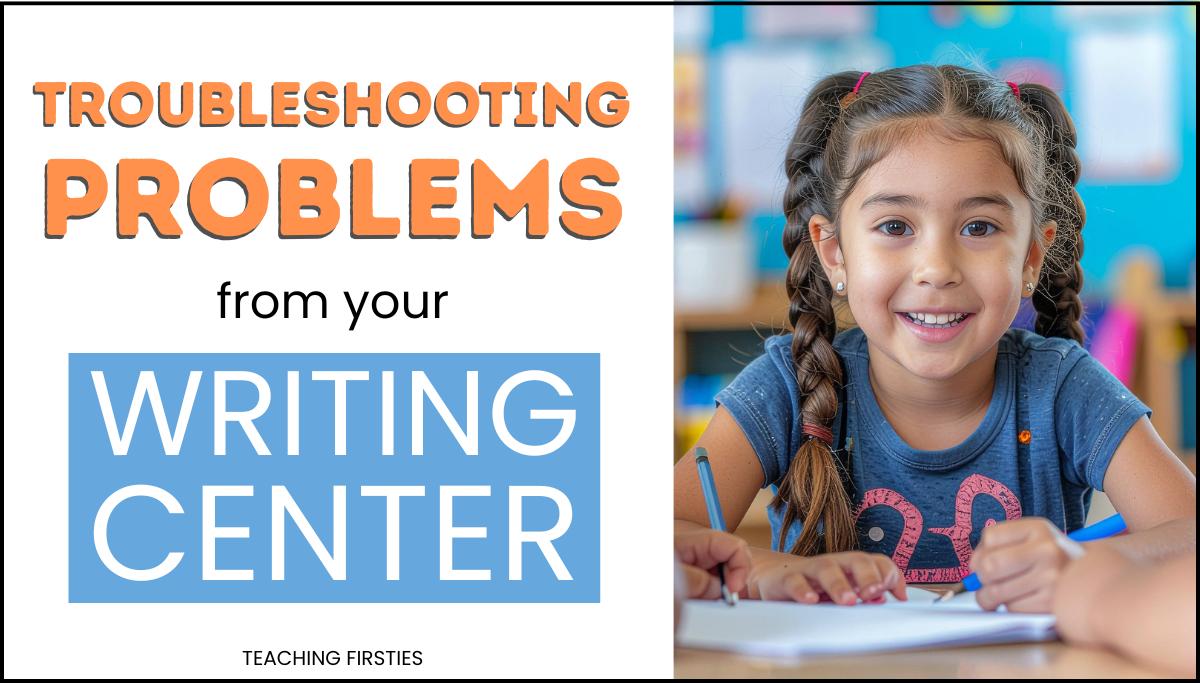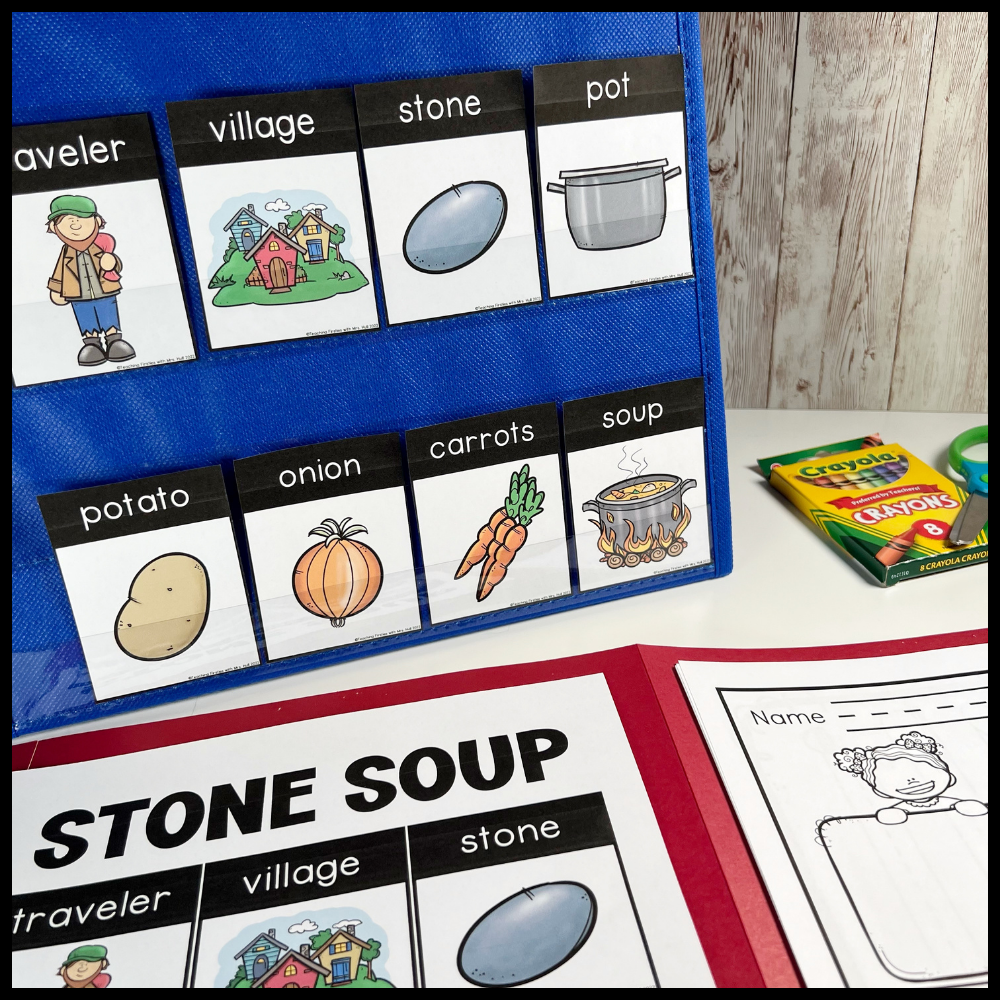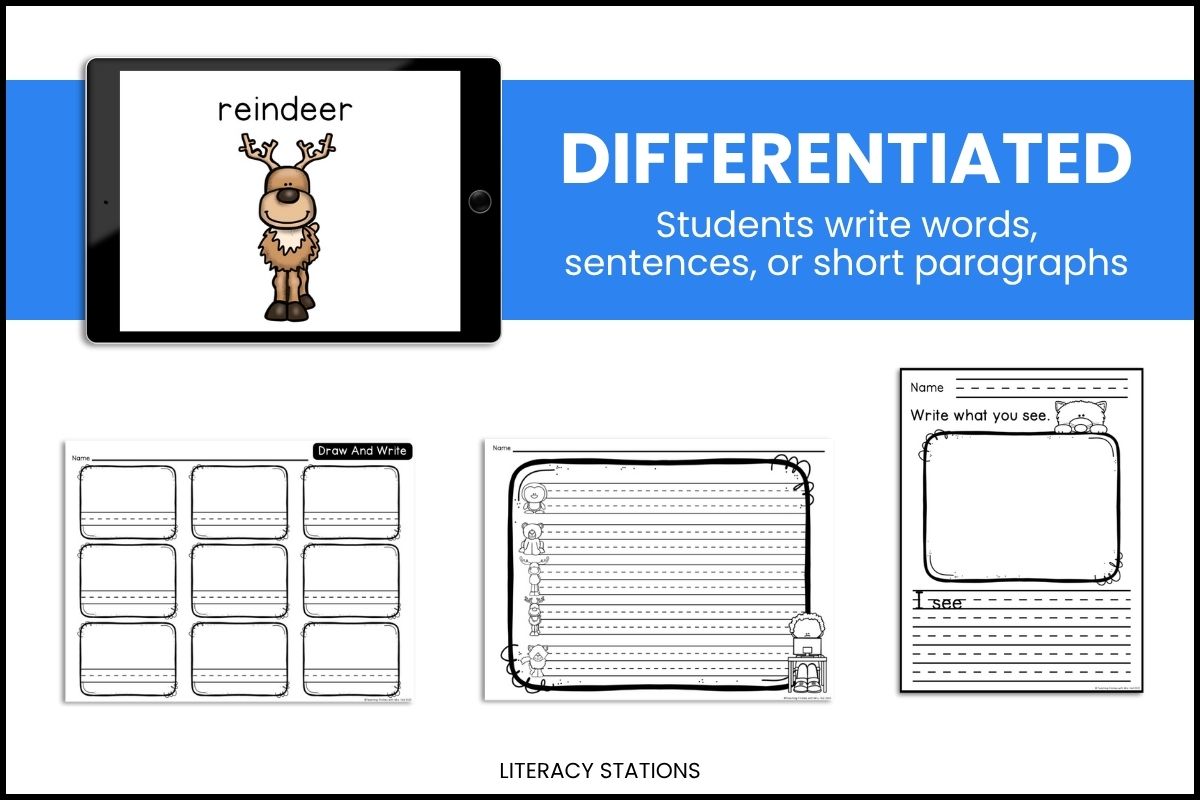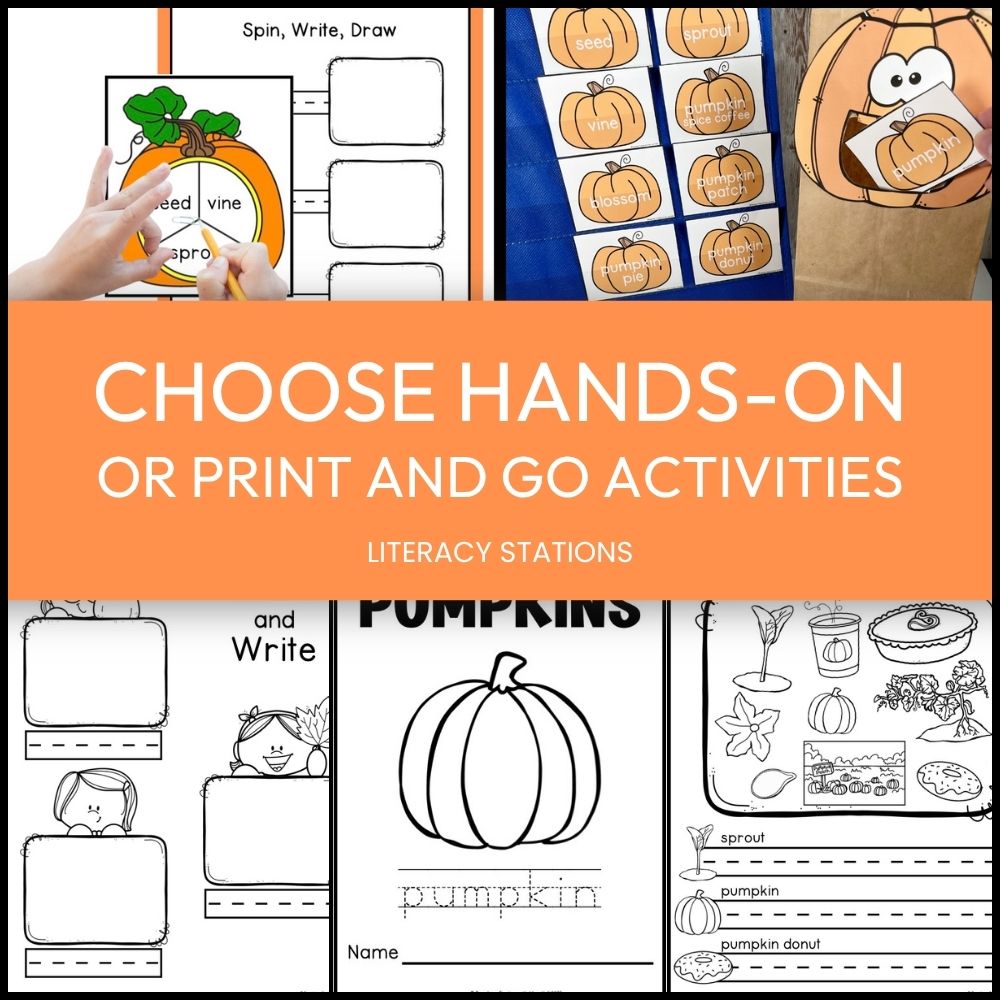First grade writing centers give your students the chance to practice writing on their own without needing you at their side. When it works, your students write quality pieces, use vocabulary tools the right way, and build writing stamina.
But even the best writing centers can hit snags. This post shares practical solutions to common problems like students running out of ideas, struggling with independence, or getting off-task. Each solution is tied to standards-based writing skills and supports Science of Reading goals like vocabulary development and written expression.
Offer Enough 1st Grade Writing Prompts
Organizing Your First Grade Writing Centers
Students Can’t Find Activities
Problem: When your supplies are unorganized or scattered, students spend more time searching for activities than writing.
Solution: Keep materials in clearly labeled bins or folders and swap out only the theme each week so the organization stays familiar while the content stays fresh.
Model and Practice Your Writing Center Expectations
Students Don’t Know What To Do
Problem: Your students rely on you for help when they aren’t sure what to do. This turns your independent center into a guided lesson.
Solution: Post visual directions and anchor charts, and use the same activity formats each week so your students know what to expect without needing extra support.
Provide Differentiated Writing Activities
Writing Activities Are Too Hard Or Not Hard Enough
Problem: Your writing center expectations feel too hard for some students and too easy for others.
Solution: Provide leveled writing options like labeling pages for beginners, sentence starters for developing writers, and full-page templates for students ready to write independently.
Use Standards-Based Writing Centers
Activities Aren’t Standards-Aligned
Problem: Your writing activities feel disconnected from the writing instruction happening in whole-group lessons.
Solution: Select first grade writing center activities that match specific writing standards, such as:
- Write What You See – Informative writing (W.1.2)
- Write What You Like – Narrative writing (W.1.3)
- List Template – Vocabulary building and idea recall (W.1.8)
Add Vocabulary Cards and Posters
First Grade Writing Centers That Work
First grade writing centers can build strong writing habits when they support student needs, offer clear expectations, and connect to writing standards. With flexible, low-prep materials like vocabulary posters, word cards, and leveled templates, students can write with more independence.
If you’re ready to simplify your writing center setup, the Literacy Stations Writing Centers provide everything you need to get started, with options for print or digital use depending on your classroom.











